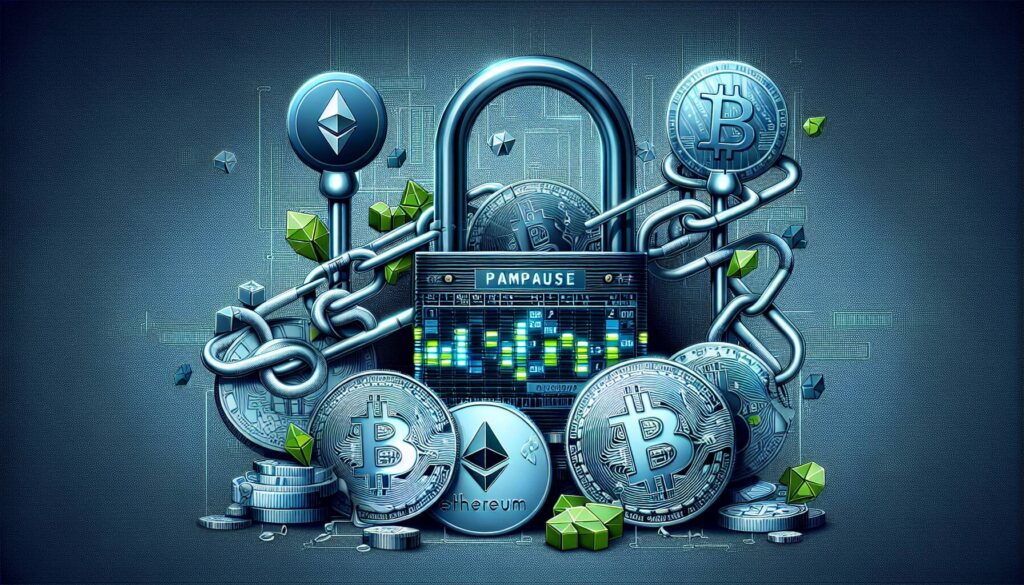In a significant development within the cryptocurrency landscape, Finastra, a prominent London-based financial technology provider, announced on Wednesday its plans to integrate its payments hub with Circle’s USDC stablecoin. This strategic partnership aims to enable banks to settle cross-border transfers utilizing the USDC token, a key player in the stablecoin market.
The initial phase of this integration will be implemented through Finastra’s Global PAYplus (GPP), a robust system that currently handles more than $5 trillion in daily cross-border payment flows. This move highlights the rising interest in stablecoins—cryptocurrencies designed to maintain stable values by being pegged to traditional currencies, predominantly the U.S. dollar. Major financial institutions are increasingly exploring stablecoins as viable alternatives to conventional settlement mechanisms.
“Together, we’re enabling financial institutions to test and launch innovative payment models that combine blockchain technology with the scale and trust of the existing banking system,” said Circle CEO Jeremy Allaire.
Finastra and Circle’s collaboration represents a pivotal shift in the payments sector, particularly as both Stripe and PayPal have established their own stablecoin frameworks. The ability to conduct near-instant settlements around the clock, along with the promise of reduced costs, is particularly appealing to banks and financial entities. The integration is set to reduce reliance on traditional correspondent banking networks, often criticized for their sluggish processing times and high fees.
Coinbase’s recent projection indicates that the stablecoin market could soar to a staggering $1.2 trillion by 2028, a significant increase from its current valuation of $270 billion, largely fueled by clear regulatory guidelines in the U.S. and a surge in corporate adoption. As the second largest stablecoin, USDC boasts a supply of approximately $69 billion, reinforcing its status in the market.
“By enabling settlement in USDC while keeping instructions in fiat currencies, banks can reduce their reliance on correspondent networks,” added Chris Walters, CEO of Finastra.
This integration not only aims to modernize the cross-border payments landscape but also reflects the ongoing intersection of traditional banking and cutting-edge blockchain technology. As the landscape evolves, the anticipation around stablecoins continues to mount, promising a transformative impact on global financial systems.

Integration of Finastra and Circle’s USDC Stablecoin
Key points regarding the collaboration between Finastra and Circle:
- Connection to USDC: Finastra will connect its payments hub to Circle’s USDC stablecoin, providing banks with options for cross-border settlements.
- Global PAYplus (GPP): The integration starts with GPP, which processes over $5 trillion in cross-border payments daily.
- Stablecoin Adoption: Major financial institutions are exploring stablecoins as alternatives to conventional settlement methods.
- Cost Efficiency: Stablecoins enable around-the-clock, near-instant settlements at lower costs, improving overall transaction efficiency.
- Projected Market Growth: The stablecoin market is expected to grow to $1.2 trillion by 2028, indicating rapid adoption and mainstream acceptance.
- Reduction of Correspondent Networks: Settling in USDC can lower banks’ reliance on correspondent networks, which face criticism for high fees and slow processing.
- Innovative Payment Models: The integration aims to empower banks to innovate in payment solutions without needing separate infrastructures.
- Corporate Participation: Significant interest from payment giants like Stripe and PayPal highlights the competitive landscape for stablecoin technology.
“Together, we’re enabling financial institutions to test and launch innovative payment models that combine blockchain technology with the scale and trust of the existing banking system.” – Jeremy Allaire, Circle CEO
Transforming Cross-Border Payments: Finastra and Circle’s Partnership
Finastra’s recent integration of Circle’s USDC stablecoin into its Global PAYplus (GPP) system marks a significant step forward in the evolution of cross-border payment solutions. This partnership positions Finastra as a vital player in a rapidly growing market, particularly as competitors like Stripe and PayPal have already established their stablecoin infrastructures. Unlike these competitors, Finastra’s approach focuses on leveraging existing banking frameworks, which could offer a smoother transition for financial institutions hesitant about adopting new technologies.
Competitive Advantages: By adopting Circle’s USDC, Finastra enables banks to make near-instant, cost-effective settlements while maintaining familiarity with fiat currencies. This unique blend could enhance operational efficiency, particularly for banks looking to innovate without overhauling their entire payment processing systems. Additionally, the projected growth of the stablecoin market to $1.2 trillion by 2028 indicates that Finastra is aligning itself with a trend that emphasizes regulatory clarity and corporate acceptance.
Disadvantages: However, integrating with a specific stablecoin may create dependencies and limit flexibility compared to broader solutions. If competitors begin to offer more diverse options that cater to varying institutional preferences, Finastra’s early move might present challenges. Furthermore, as the market evolves, uncertainties surrounding regulatory frameworks could pose risks that affect adoption rates and operational procedures.
Financial institutions primarily positioned in cross-border transaction spaces could stand to benefit significantly from this integration, as it promises reduced reliance on traditional correspondent networks plagued by inefficiencies. However, banks or corporates heavily invested in existing infrastructures might encounter obstacles in transitioning to this new model, thus creating friction in the adoption process.
In essence, while Finastra and Circle’s strategy could drive efficiency and innovation within the banking sector, institutions must navigate the balance between embracing new technology and the inherent risks associated with them.

















